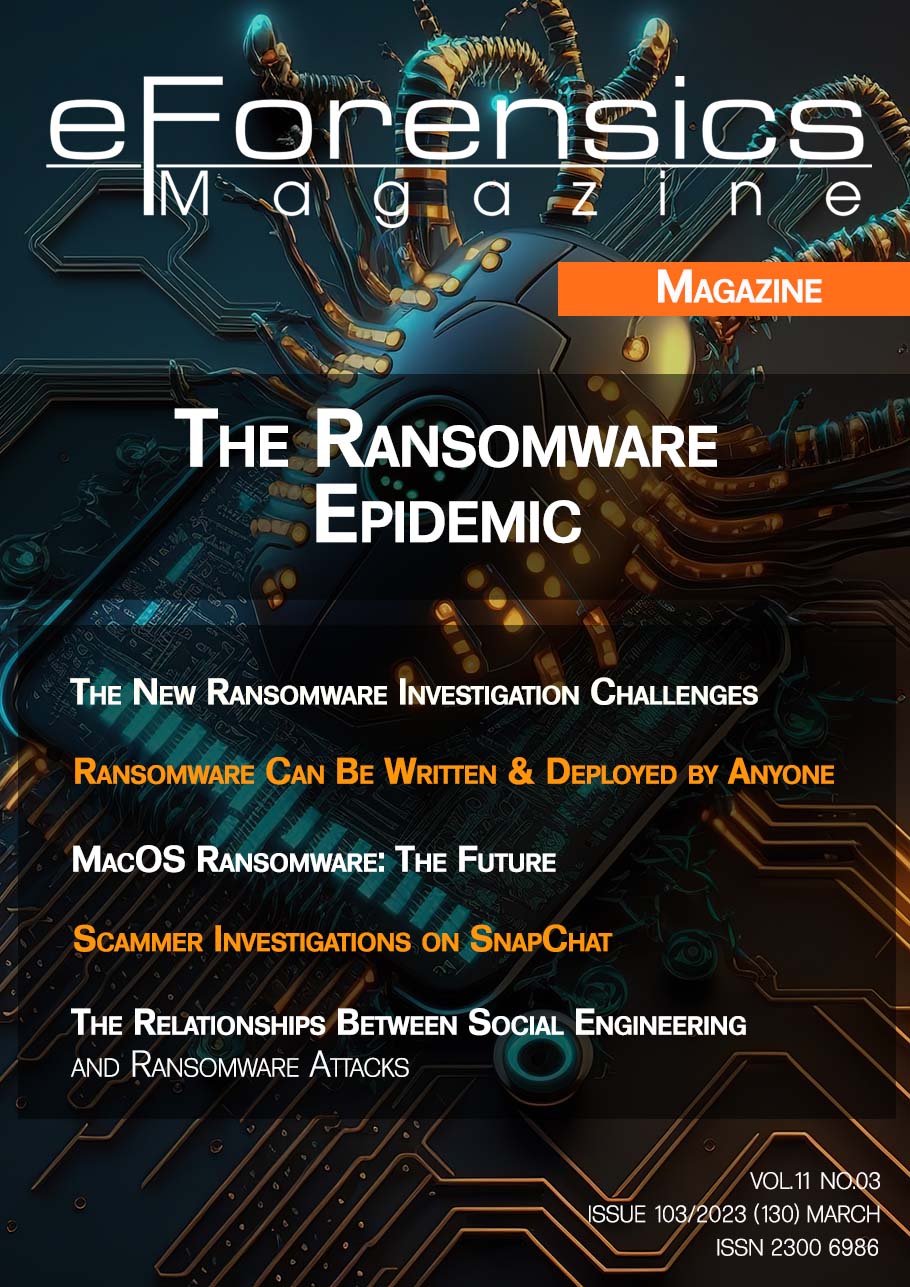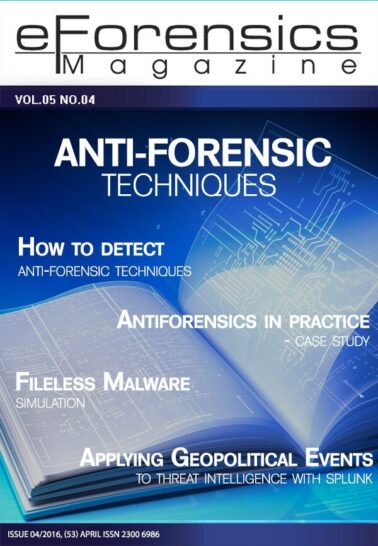No products in the cart.
Editor's Word
Dear Readers,
All of you who are interested in learning more about ransomware should read the March issue. To summarize the information from the articles, ransomware is malware that uses encryption to hold the data of a victim at ransom. It is no secret that ransomware has quickly gained popularity and visibility. Various organizations have suffered substantial losses as a result of recent ransomware attacks. Healthcare facilities have been unable to provide their services, cities have been unable to operate, and various other organizations have been unable to provide their services. Because ransomware often targets databases and file servers, it can quickly shut down an entire business. As well as causing harm and incurring expenses, cybercrime costs organizations a lot of money.
All of our articles have been written to help you learn more about ransomware. I hope you find our articles useful. I'd like to thank all the authors for their hard work, positive attitude, and professionalism. We would like to thank our experts, reviewers, and proofreaders for their contributions to this publication and invite others to work with us in the future.
Enjoy reading,
Ewa & eForensics Magazine Team
There is no PREVIEW for this issue. You can read three selected articles available online in the OFFICIAL section.
Table of Contents
Ransomware – Attacks on the Rise:
Are We Prepared for the Next Wave of Cybercrime?
Wilson Mendes
In this article, we'll look at the most effective methods for preventing, detecting, and resolving ransomware attacks, as well as the effects of these attacks on society and the global economy. Join us on a journey through modern cybersecurity and learn how to protect yourself from one of the digital world's most dangerous threats.
The Human Element: an Analysis of the Relationships Between Social Engineering and Ransomware Attacks
Sergio Figueiredo & Fabiana Botton
This article focuses on how the human factor can be used as an agent to exploit, turning into an attack vector, while also discussing the relationship between social engineering and ransomware.
Ransomware Investigation: The New Challenges
Paulo Pereira, PhD
Today, the dark web offers cloud infrastructure and servers for hire, and deployment is known as "ransomware-as-a-service" (RaaS). Because the cloud service enables multiple ransomware deliveries, code reuse from other ransomware is common. For this reason, it is interesting to analyze the artifact to verify if it belongs to any already detected ransomware family.
Ransomware
Kate Libby
The first step in creating ransomware is to create a plan. This includes deciding on the target and type of ransomware to write, as well as how it will work and how much the ransom will be. You must also decide how you will deliver the ransomware and how you will be paid. Once you have a plan in place, you can begin coding.
Apple macOS Ransomware Where Art Thou?
Israel Torres
Some people bring up the Apple macOS space of macOS-based malware in conversations. Why doesn't it appear to be as common as Microsoft Windows attacks? Yes, we understand the market, and Apple still has a long way to go to catch up to the numbers in the personal computer space, particularly in a corporate enterprise organization. You will learn about ransomware, a very specific type of malware, and what it brings to the underground table.
Sensory-based Deception Attacks to thwart Drone Forensic Investigations
Rhonda Johnson
Sensory-based deception attacks that obstruct drone forensic investigations will be discussed in this article. Sensory-based deception attacks on drones are attacks that use deceptive sensory information to manipulate a drone's behavior. Sensory-based deception attacks can make drone forensic investigations difficult.
Scammer Investigations on SnapChat
Jeff Minakata
In this article, I will discuss a couple of real-life scams. We will dissect the scam and take steps to help identify the perpetrators.
How Machine Learning is Transforming Digital Forensics Investigations
Kalpa Kalhara Sampath
Because of the increased use of digital devices and online platforms, the field of digital forensics is rapidly evolving, and machine learning is playing an increasingly important role in it. In recent years, machine learning has revolutionized digital forensics investigations by introducing new techniques for analyzing and processing digital evidence.
What Is Deepfake?
Chirath De Alwis, Kavindu Anjana Gunasekara, Iromika Udayappriya, M.P. Nadun Chathuranga, J.L.Kavinda Akalanka, K.I. Srimal
Deepfake is a technology that uses artificial intelligence and deep learning to manipulate videos or images. With that digitally forged image or video, a new one can be created that appears to be someone else. Deepfake, like other technologies in the world, did not emerge overnight. Deepfake, as previously stated, uses photos and videos to generate false information. It all started with photography.
Interview with Andreas Mueller, Founder, and COO of Downstreem
Ewa Dudzic
Andreas Mueller, the founder and CEO of Downstreem, a global digital forensics firm specializing in mobile devices and complex forensic analysis, understands this better than anyone.
Only logged in customers who have purchased this product may leave a review.





Reviews
There are no reviews yet.